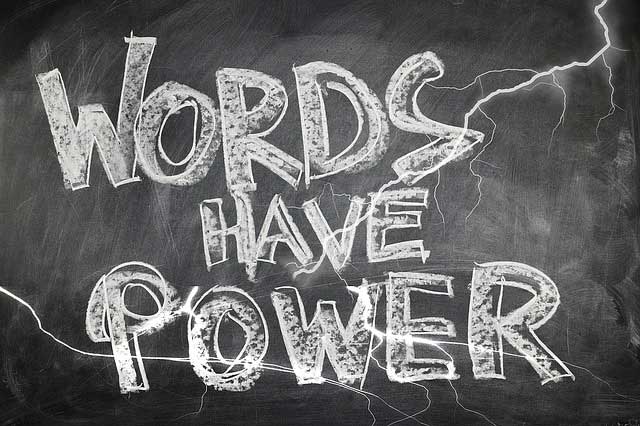Persuasive writing is an art form that requires both skill and creativity. It involves persuasive techniques to influence readers’ thoughts and feelings about a particular topic or issue. So, by employing persuasive tactics, writers can persuade their audience to agree with their argument or point of view.
You can use a rhetorical question and emotive language or cite evidence to create strong arguments. You can use various persuasive techniques to change people’s minds or draw them towards an obvious answer, or even get them to act in a particular way.
With the right combination of persuasive techniques, any writer can change how their audience thinks, behaves, and spends their money.
Have I convinced you yet? Let’s get started.
What Are Effective Persuasive Techniques?
We use persuasive techniques to – principally – capture the reader’s attention. And then, when we have their attention, we use compelling arguments to back up our assertions with evidence.
From advertising copy to article writing, the content writer develops a particular point of view to convince readers to think in a particular way.
So, we write persuasively to guide purchase decisions and offer social proof from personal stories. We use emotive language that helps the writer influence people toward a decision or a thought process.
However:
It’s a heady responsibility!
Persuasive techniques in creative writing
In the context of creative writing and short story writing, we create worlds, characters, and situations in the hope that our readers will invest their time and stick with our novel.
Our main purpose as creative writers is to use persuasive, emotive language that keeps the reader turning pages.
We can turn an opinion into a character and explain the nuances of our fictional world through that character’s actions, words, and intentions.
So, we can use effective persuasive techniques in different ways to reinforce our creative vision.
Use persuasive techniques to captivate our readers’ interest
If we’re not convincing in our rhetoric, we have no credibility. So, we need to research the world of our story and find the right words to make the reader feel part of the action.
Remember, always consider your audience, and drive the action of your interesting story, using events and metaphors that make the reader feel and think.
These persuasive techniques can help captivate your readers’ interest:
- Citing well-researched facts and evidence that bolster your argument.
- Asking a meaningful rhetorical question that provokes thought and reflection on a topic.
- Using colloquial language that specifically appeals to a distinct audience.
- Creating a logical path of reasoning, leading toward a convincing conclusion.
- Using vivid imagery and descriptions to bring ideas to life
- Crafting vivid worlds that bring ideas to life.
When appropriately employed, these persuasive tactics can help writers successfully advance their message, story, or point of view.
What Are the Six Principles of Persuasion?
The six principles of persuasion, first described by Aristotle, can also be referred to as persuasive appeals.
They are ethos, pathos, logos, kairos, topoi, and mythos.
Ethos
Ethos refers to the credibility that a speaker or writer brings to a subject. It involves showing that the speaker or writer is credible and trustworthy through evidence and logical reasoning.
We trust some people more than others because they’re well-informed or have expertise. However, we believe some speakers and writers simply because of confirmation bias.
So, consider what technique you might employ to convince your reader that you’re a helpful person. Talk from the heart from a perspective of good evidential learning, and you’re on the right track.
Pathos
Pathos is an appeal to the audience’s emotions. It relies on persuasive writing techniques and emotive imagery to evoke emotion that convinces or persuades.
Pathos surrounds us, from advertising content to social media content. When influenced by pathos, we should always ask ourselves whether the opinion is factually correct or simply a persuasive technique that reinforces what we hope to hear.
Logos
Logos is an appeal to logic or reason. It uses facts and evidence to support a persuasive argument by logically explaining why it’s true or reasonable.
Some writers use logical, persuasive language to persuade readers towards an irrefutable idea – even if there’s resistance.
For example, you could reason:
- All humans are mortal – they’re born, they live, then they die.
- Plato was human, therefore
- Plato was mortal
Kairos
Kairos is an appeal to timeliness or relevancy. For example, to persuade people, the argument or statement needs to be relevant and “of the time.”
So, successful advertising copy relies on timing. These days, we want:
- Inclusive language
- A sense of limited availability
- An idea that the product or statement refers to the present moment
- Offers an answer to current events
Kairos emphasizes how persuasive arguments need to be timely and relevant to be convincing.
Topoi
Topoi is an appeal based on shared beliefs between the speaker/writer and the audience.
This approach relies on tapping into shared values, experiences, customs, and beliefs between the writer and audience for persuasive arguments to be convincing.
Again, this leaves us – as an audience – open to potential manipulation. We must question sources and read more than just the last paragraph of an article.
Do we disregard an expert opinion because it challenges what we want to be true?
Mythos
Mythos is an appeal based on storytelling or narrative structure. It involves using stories with compelling characters and plots that have persuasive messages embedded within them for persuasive arguments to be successful.
The Role of Evidence, Emotion, and Narrative Structure in Persuasive Writing
Each of Aristotle’s persuasive appeals is a critical component when creating a persuasive argument because they rely on elements such as:
- Evidence
- Emotion, and
- Narrative structure
Interestingly enough, Aristotle believed this combination creates a powerful synergy, which can lead people to take action and change their opinions about specific topics or issues.
And this is where we need to consider the potency of persuasive language.
The Potency of Persuasive Techniques
Like Voltaire once inferred (later coined by Uncle Ben in Spiderman), with all this potential influence comes a profound responsibility.
For example, social media is a platform that thrives on an imbalance of Aristotle’s principles of persuasion. We risk dangerous manipulation driven by confirmation bias if we pick and choose just a few persuasive writing techniques.
For example, political elections worldwide have been swung by rhetorical questions shared on timelines: news items, blogs, and videos that the reader takes as fact without questioning the ethos and logos of what they’re reading.
They have been convinced by the pathos (emotions), kairos (timeliness), and topoi (commonality) of the argument. But without considering the ethos (reliability) of the speaker or writer or the logos (logic) of the argument, the public has made decisions based on rhetoric rather than fact.
What Is the Most Convincing Word?
There’s no such thing as the most convincing word – to be able to convince, you need to appeal directly to a reader’s biases. And, of course, everyone loves and hates different things.
However, in the advertising world, there’s a list of words that have the potential to persuade strongly:
- You
- Exclusive
- Free
- New
- Results
- Safety
- Limited
- Easy
- Guaranteed
- Love
- Proven
- Because
These are words that appeal to our emotions (pathos), our logical reasoning (logos), and what we want now (topoi). And if these words are used with a sense of narrative artistry (mythos), using a trustworthy and authoritative voice (ethos), you’ll find your win-win situation.
Writing a slogan that makes sense to the reader and drives a learning point with examples of benefits over the long run can support your advertising campaign. Provide answers to questions – telling people what to think – and you have great power at your fingertips.
But be the person that conducts thorough research before you aim to convince.
Persuasive Language for Fictional Novelists
There’s a dark side to persuasive techniques, but there’s also the fun side – the reason we love to lose ourselves in a great novel.
Every persuasive letter you put to the page can keep your reader gripped.
As novelists, we don’t have such an enormous responsibility to the truth as a freelance writer creating media copy. Instead, we use our writing technique to push forward a story that uses dramatic questions to keep the reader engaged.
But:
We can certainly learn a lot from Aristotle regarding the balance of persuasive writing.
Thanks for reading.
Harry Wallett is the Founder and Managing Director of Relay Publishing. Combining his entrepreneurial background with a love of great stories, Harry founded Relay in 2013 as a fresh way to create books and for writers to earn a living from their work. Since then, Relay has sold 3+ million copies and worked with 100s of writers on bestselling titles such as Defending Innocence, The Alveria Dragon Akademy Series and Rancher’s Family Christmas. Harry oversees the creative direction of the company, and works to develop a supportive collaborative environment for the Relay team to thrive within in order to fulfill our mission to create unputdownable books.
Relay Publishing Wants You
If you think you have what it takes to become a brilliant writer, editor, or storyliner, Relay Publishing has a range of exciting opportunities.
Find out more about us, and get in touch. We can’t wait to hear from you!



